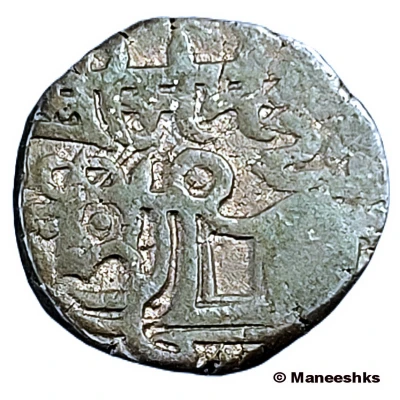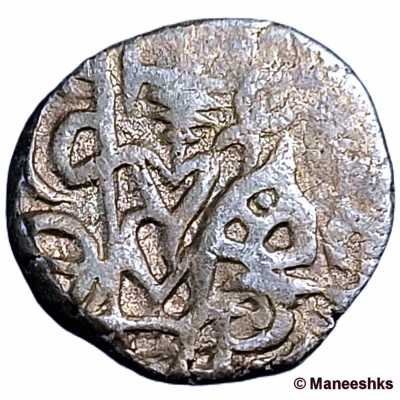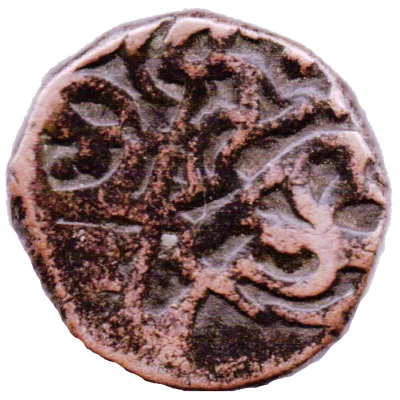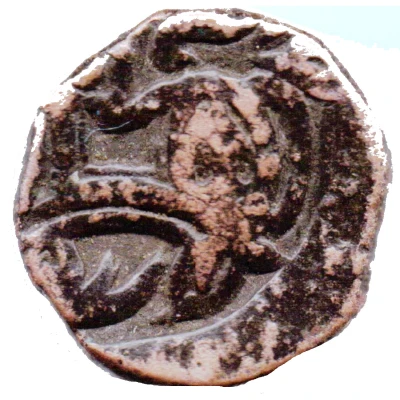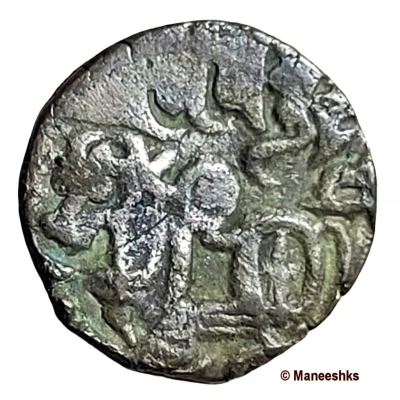
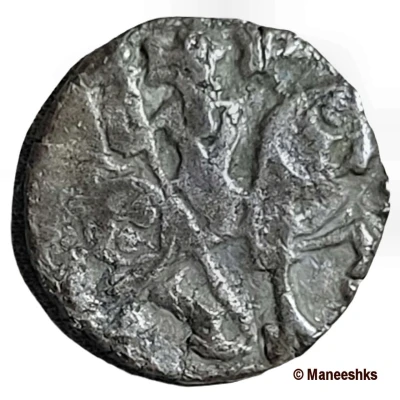

Jital - Muhammad Bin Sam Dehli type-muled ND
| Billon (32 Rati) | 3.2 g | 17.05 mm |
| Issuer | Ghurid dynasty |
|---|---|
| Sultan | Mu'izz ad-Din Muhammad ibn Sam (سلطان معزالدین محمد غوری) (1203-1206) |
| Type | Standard circulation coin |
| Years | 1193-1206 |
| Value | 1 Jital (1⁄48) |
| Currency | Tanka (1206-1526) |
| Composition | Billon (32 Rati) |
| Weight | 3.2 g |
| Diameter | 17.05 mm |
| Thickness | 1.90 mm |
| Shape | Round (irregular) |
| Technique | Hammered |
| Demonetized | Yes |
| Updated | 2024-10-05 |
| Numista | N#371218 |
|---|---|
| Rarity index | 90% |
Reverse
Horseman with lance, facing right
Above: `sri prithvi raya deva' in Devanagari
Script: Devanagari
Translation:
Name of the previous ruler, Prithvi Raja of Chauhan dynasty.
[see comment for details]
Edge
Plain
Comment
Weight varies 3-3.20g
Jital or Dehliwal (Muhammad Bin Sam) Dehli type-muled
These 32 rati coins were muled with the die of the Chauhan ruler, Prithvi Raja, who ruled before Mu'izz Al-Din Muhammad Bin Sam.
Obv: Rev:
History
Muʿizz al-Dīn Muḥammad ibn Sām, also called Muhammad of Ghor, or simply Muhammad Ghori, or Shihāb al-Dīn Muḥammad Ghūrī, (born 1144 CE - died March 15, 1206, Damyak, India), was from the Ghurid dynasty (based in Ghor in present-day central Afghanistan) who ruled from 1173 to 1206 CE (AH 589-602). He conquered the north Indian plain and was one of the founders of Muslim rule in India.
Coinage *
The coins issued in the name of Muhammad Bin Sam were issued from (a) Ghazna and elsewhere in the Ghurid territories outside India; (b) northern India by his general Aibak; and (c) Bengal (east India) by Muhammad Bakhtiyar Khalji.
In India, the Muslim conquerors continued to strike the indigenous gold and billon coin types that were in use but added the name of Muhammad Bin Sam. The Billon Jitals or Dehliwals can be assigned to three minting places - Dehli (or Delhi), Lahore and Badaun, They can also be divided into 3 main types:
- bull on the obverse and horseman on reverse (as in this coin)
- ruler's name in Arabic on obverse and horseman on reverse
- ruler's title in Arabic spread over both sides
[* source Goron & Goenka]
Interesting fact
One interesting fact about this coin is that it was made of Billon, which is an alloy of silver and copper, and it weighs 3.2 grams.
